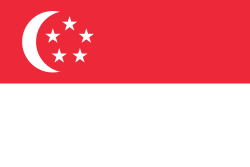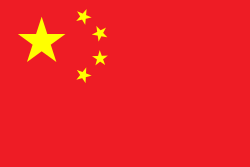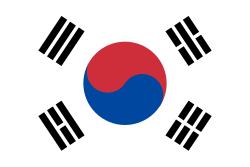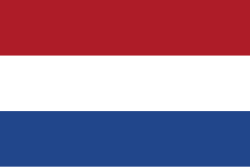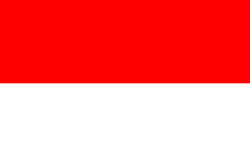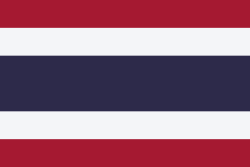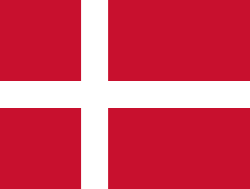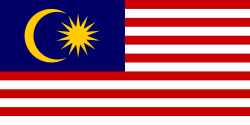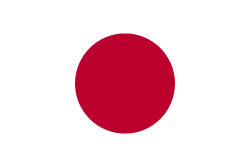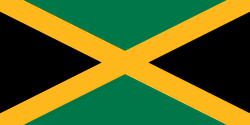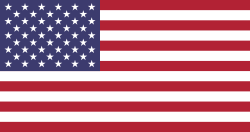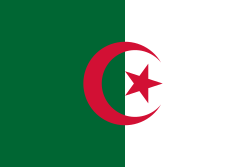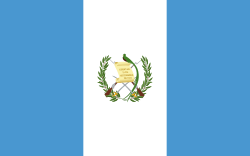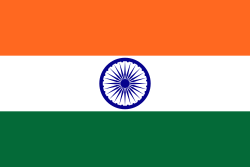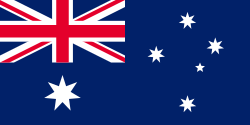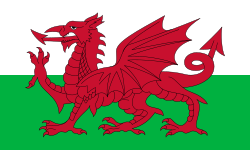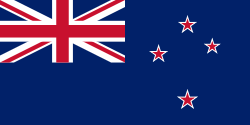Japan Open 2004
Die Japan Open 2004 im Badminton fanden vom 6. bis zum 11. April 2004 statt. Veranstaltungsort war die Kokuritsu Yoyogi Kyōgijō in Shibuya, Tokio.
Sieger und Platzierte
| Disziplin | Gold | Silber | Bronze |
|---|---|---|---|
| Herreneinzel | |||
| Dameneinzel | |||
| Herrendoppel | |||
| Damendoppel | |||
| Mixed | |||
Finalergebnisse
| Disziplin | Sieger | Finalist | Ergebnis |
|---|---|---|---|
| Herreneinzel | 15-13, 15-6 | ||
| Dameneinzel | 7-11, 11-7, 11-7 | ||
| Herrendoppel | 15-7, 6-15, 15-6 | ||
| Damendoppel | 15-6, 5-15, 15-1 | ||
| Mixed | 15-10, 15-13 |
Ergebnisse
Herreneinzel Qualifikation
 Kennevic Asuncion –
Kennevic Asuncion –  Pei Wei Chung: 15-9 / 15-3
Pei Wei Chung: 15-9 / 15-3 Kenta Kazuno –
Kenta Kazuno –  Charles Pyne: 15-11 / 15-5
Charles Pyne: 15-11 / 15-5 Enkhbat Olonbayar –
Enkhbat Olonbayar –  Clemens Michael Smola: 15-9 / 15-1
Clemens Michael Smola: 15-9 / 15-1 Shinji Shinkai –
Shinji Shinkai –  Jadamba Gerel-Erdene: 15-2 / 15-1
Jadamba Gerel-Erdene: 15-2 / 15-1 Yusuke Shinkai –
Yusuke Shinkai –  Bo Rafn: 15-10 / 15-12
Bo Rafn: 15-10 / 15-12 Zhu Weilun –
Zhu Weilun –  Keishi Kawaguchi: 15-3 / 15-6
Keishi Kawaguchi: 15-3 / 15-6 Shinya Ohtsuka –
Shinya Ohtsuka –  Stanislav Pukhov: 15-10 / 6-15 / 15-1
Stanislav Pukhov: 15-10 / 6-15 / 15-1 Naoki Kawamae –
Naoki Kawamae –  Raju Rai: 15-13 / 15-3
Raju Rai: 15-13 / 15-3 Poompat Sapkulchananart –
Poompat Sapkulchananart –  Salim Sameon: 04. Jun
Salim Sameon: 04. Jun Simon Santoso –
Simon Santoso –  Masahiro Nagahara: 15-7 / 15-6
Masahiro Nagahara: 15-7 / 15-6 Andrew Smith –
Andrew Smith –  Gerald Ho Hee Teck: 15-4 / 15-0
Gerald Ho Hee Teck: 15-4 / 15-0 Kenta Kazuno –
Kenta Kazuno –  Kennevic Asuncion: 15-9 / 15-13
Kennevic Asuncion: 15-9 / 15-13 Koichi Saeki –
Koichi Saeki –  Enkhbat Olonbayar: 15-2 / 15-0
Enkhbat Olonbayar: 15-2 / 15-0 Hiroshi Shimizu –
Hiroshi Shimizu –  Shinji Shinkai: 15-13 / 15-12
Shinji Shinkai: 15-13 / 15-12 Yusuke Shinkai –
Yusuke Shinkai –  Batkhurel Ochirpurev: 15-1 / 15-1
Batkhurel Ochirpurev: 15-1 / 15-1 Zhu Weilun –
Zhu Weilun –  Shinya Ohtsuka: 15-17 / 15-7 / 15-13
Shinya Ohtsuka: 15-17 / 15-7 / 15-13 Poompat Sapkulchananart –
Poompat Sapkulchananart –  Naoki Kawamae: 15-10 / 15-3
Naoki Kawamae: 15-10 / 15-3 Simon Santoso –
Simon Santoso –  Marc Zwiebler: 15-11 / 15-3
Marc Zwiebler: 15-11 / 15-3 Andrew Smith –
Andrew Smith –  Kazuteru Kozai: 8-15 / 15-8 / 15-1
Kazuteru Kozai: 8-15 / 15-8 / 15-1
Herreneinzel
 Sony Dwi Kuncoro –
Sony Dwi Kuncoro –  Nabil Lasmari: 15-7 / 15-6
Nabil Lasmari: 15-7 / 15-6 Shoji Sato –
Shoji Sato –  Poompat Sapkulchananart: 15-5 / 15-2
Poompat Sapkulchananart: 15-5 / 15-2 Peter Gade –
Peter Gade –  Pedro Yang: 15-3 / 15-2
Pedro Yang: 15-3 / 15-2 Agus Hariyanto –
Agus Hariyanto –  Zhu Weilun: 17-15 / 15-9
Zhu Weilun: 17-15 / 15-9 Roslin Hashim –
Roslin Hashim –  Yohan Hadikusumo Wiratama: 15-5 / 15-10
Yohan Hadikusumo Wiratama: 15-5 / 15-10 Koichi Saeki –
Koichi Saeki –  Chien Yu-hsiu: 15-5 / 15-3
Chien Yu-hsiu: 15-5 / 15-3 Chen Yu –
Chen Yu –  Björn Joppien: 15-2 / 15-11
Björn Joppien: 15-2 / 15-11 Muhammad Hafiz Hashim –
Muhammad Hafiz Hashim –  Simon Santoso: 15-10 / 7-15 / 15-4
Simon Santoso: 15-10 / 7-15 / 15-4 Jens Roch –
Jens Roch –  Nikhil Kanetkar: 12-15 / 15-13 / 9-0
Nikhil Kanetkar: 12-15 / 15-13 / 9-0 Niels Christian Kaldau –
Niels Christian Kaldau –  Ng Wei: 10-15 / 15-12 / 15-12
Ng Wei: 10-15 / 15-12 / 15-12 Yusuke Shinkai –
Yusuke Shinkai –  Stuart Brehaut: 15-10 / 15-11
Stuart Brehaut: 15-10 / 15-11 Ronald Susilo –
Ronald Susilo –  Yousuke Nakanishi: 15-8 / 15-4
Yousuke Nakanishi: 15-8 / 15-4 Park Tae-sang –
Park Tae-sang –  Sergio Llopis: 15-13 / 15-10
Sergio Llopis: 15-13 / 15-10 Anders Boesen –
Anders Boesen –  Richard Vaughan: 15-9 / 15-3 / 15-0
Richard Vaughan: 15-9 / 15-3 / 15-0 Dicky Palyama –
Dicky Palyama –  Hiroshi Shimizu: 15-13 / 15-0
Hiroshi Shimizu: 15-13 / 15-0 Park Sung-hwan –
Park Sung-hwan –  Lee Chong Wei: 15-11 / 11-15 / 17-16
Lee Chong Wei: 15-11 / 11-15 / 17-16 Lin Dan –
Lin Dan –  Andrew Smith: 15-2 / 15-6
Andrew Smith: 15-2 / 15-6 Sony Dwi Kuncoro –
Sony Dwi Kuncoro –  Shoji Sato: 15-2 / 15-7
Shoji Sato: 15-2 / 15-7 Xia Xuanze –
Xia Xuanze –  Yuichi Ikeda: 15-11 / 15-8
Yuichi Ikeda: 15-11 / 15-8 Peter Gade –
Peter Gade –  Agus Hariyanto: 11-15 / 15-4 / 15-8
Agus Hariyanto: 11-15 / 15-4 / 15-8 Lee Hyun-il –
Lee Hyun-il –  Kenta Kazuno: 15-8 / 15-5
Kenta Kazuno: 15-8 / 15-5 Roslin Hashim –
Roslin Hashim –  Koichi Saeki: 15-6 / 15-1
Koichi Saeki: 15-6 / 15-1 Bao Chunlai –
Bao Chunlai –  Boonsak Ponsana: 15-5 / 10-15 / 15-3
Boonsak Ponsana: 15-5 / 10-15 / 15-3 Muhammad Hafiz Hashim –
Muhammad Hafiz Hashim –  Chen Yu: 12-15 / 15-11 / 15-5
Chen Yu: 12-15 / 15-11 / 15-5 Niels Christian Kaldau –
Niels Christian Kaldau –  Jens Roch: 6-15 / 15-11 / 15-6
Jens Roch: 6-15 / 15-11 / 15-6 Shon Seung-mo –
Shon Seung-mo –  Toru Matsumoto: 15-6 / 15-8
Toru Matsumoto: 15-6 / 15-8 Ronald Susilo –
Ronald Susilo –  Yusuke Shinkai: 15-3 / 15-3
Yusuke Shinkai: 15-3 / 15-3 Wong Choong Hann –
Wong Choong Hann –  Yeoh Kay Bin: 15-7 / 17-16
Yeoh Kay Bin: 15-7 / 17-16 Park Tae-sang –
Park Tae-sang –  Anders Boesen: 15-8 / 17-16
Anders Boesen: 15-8 / 17-16 Kenneth Jonassen –
Kenneth Jonassen –  Rasmus Wengberg: 15-6 / 15-1
Rasmus Wengberg: 15-6 / 15-1 Dicky Palyama –
Dicky Palyama –  Park Sung-hwan: 15-9 / 15-12
Park Sung-hwan: 15-9 / 15-12 Chen Hong –
Chen Hong –  Przemysław Wacha: 15-6 / 15-3
Przemysław Wacha: 15-6 / 15-3 Lin Dan –
Lin Dan –  Sony Dwi Kuncoro: 15-9 / 15-1
Sony Dwi Kuncoro: 15-9 / 15-1 Peter Gade –
Peter Gade –  Xia Xuanze: 15-7 / 15-12
Xia Xuanze: 15-7 / 15-12 Roslin Hashim –
Roslin Hashim –  Lee Hyun-il: 15-7 / 15-11
Lee Hyun-il: 15-7 / 15-11 Bao Chunlai –
Bao Chunlai –  Muhammad Hafiz Hashim: 15-10 / 15-10
Muhammad Hafiz Hashim: 15-10 / 15-10 Shon Seung-mo –
Shon Seung-mo –  Niels Christian Kaldau: 15-9 / 15-1
Niels Christian Kaldau: 15-9 / 15-1 Ronald Susilo –
Ronald Susilo –  Wong Choong Hann: 15-10 / 15-5
Wong Choong Hann: 15-10 / 15-5 Park Tae-sang –
Park Tae-sang –  Kenneth Jonassen: 15-10 / 15-6
Kenneth Jonassen: 15-10 / 15-6 Chen Hong –
Chen Hong –  Dicky Palyama: 15-6 / 15-4
Dicky Palyama: 15-6 / 15-4 Lin Dan –
Lin Dan –  Peter Gade: 7-15 / 15-9 / 15-9
Peter Gade: 7-15 / 15-9 / 15-9 Bao Chunlai –
Bao Chunlai –  Roslin Hashim: 15-5 / 15-9
Roslin Hashim: 15-5 / 15-9 Ronald Susilo –
Ronald Susilo –  Shon Seung-mo: 15-6 / 6-15 / 15-0
Shon Seung-mo: 15-6 / 6-15 / 15-0 Park Tae-sang –
Park Tae-sang –  Chen Hong: 15-11 / 10-15 / 15-10
Chen Hong: 15-11 / 10-15 / 15-10 Bao Chunlai –
Bao Chunlai –  Lin Dan: 15-13 / 15-10
Lin Dan: 15-13 / 15-10 Ronald Susilo –
Ronald Susilo –  Park Tae-sang: 13-15 / 15-10 / 15-11
Park Tae-sang: 13-15 / 15-10 / 15-11 Ronald Susilo –
Ronald Susilo –  Bao Chunlai: 15-13 / 15-6
Bao Chunlai: 15-13 / 15-6
Dameneinzel Qualifikation
 Woon Sze Mei –
Woon Sze Mei –  Lenny Permana: 11-10 / 11-8
Lenny Permana: 11-10 / 11-8 Dai Yun –
Dai Yun –  Yoshimi Hataya: 11-5 / 11-1
Yoshimi Hataya: 11-5 / 11-1 Cheng Shao-chieh –
Cheng Shao-chieh –  Charmaine Reid: 11-9 / 11-2
Charmaine Reid: 11-9 / 11-2 Chien Yu-chin –
Chien Yu-chin –  Dolores Marco: 11-13 / 11-8 / 11-6
Dolores Marco: 11-13 / 11-8 / 11-6 Silvi Antarini –
Silvi Antarini –  Tomoka Yoshioka: 11-9 / 11-0
Tomoka Yoshioka: 11-9 / 11-0 Mihoko Matsuo –
Mihoko Matsuo –  Mesinee Mangkalakiri: 11-0 / 11-1
Mesinee Mangkalakiri: 11-0 / 11-1 Aparna Popat –
Aparna Popat –  Agnese Allegrini: 11-1 / 11-5
Agnese Allegrini: 11-1 / 11-5 Julia Mann –
Julia Mann –  Ella Diehl: 11-8 / 11-4
Ella Diehl: 11-8 / 11-4 Tomomi Matsuda –
Tomomi Matsuda –  Denyse Julien: 11-8 / 11-0
Denyse Julien: 11-8 / 11-0 Tomoko Koyanagi –
Tomoko Koyanagi –  Woon Sze Mei: 11-8 / 11-5
Woon Sze Mei: 11-8 / 11-5 Maiko Ichimiya –
Maiko Ichimiya –  Siu Ching Man: 11-6 / 11-5
Siu Ching Man: 11-6 / 11-5 Dai Yun –
Dai Yun –  Wong Mew Choo: 11-7 / 11-2
Wong Mew Choo: 11-7 / 11-2 Nozomi Kametani –
Nozomi Kametani –  Yu Hirayama: 11-7 / 3-11 / 11-7
Yu Hirayama: 11-7 / 3-11 / 11-7 Seo Yoon-hee –
Seo Yoon-hee –  Cheng Shao-chieh: 11-9 / 11-2
Cheng Shao-chieh: 11-9 / 11-2 Kaori Imabeppu –
Kaori Imabeppu –  Kennie Asuncion: 13-10 / 11-3
Kennie Asuncion: 13-10 / 11-3 Chien Yu-chin –
Chien Yu-chin –  Miyo Akao: 11-9 / 11-0
Miyo Akao: 11-9 / 11-0 Ling Wan Ting –
Ling Wan Ting –  Nadieżda Zięba: 13-10 / 11-2
Nadieżda Zięba: 13-10 / 11-2 Kyoko Komuro –
Kyoko Komuro –  Silvi Antarini: 11-8 / 11-8
Silvi Antarini: 11-8 / 11-8 Chie Umezu –
Chie Umezu –  Jody Patrick: 11-0 / 11-6
Jody Patrick: 11-0 / 11-6 Mihoko Matsuo –
Mihoko Matsuo –  Nigella Saunders: 11-1 / 11-2
Nigella Saunders: 11-1 / 11-2 Salakjit Ponsana –
Salakjit Ponsana –  Kamila Augustyn: 11-1 / 11-0
Kamila Augustyn: 11-1 / 11-0 Eriko Hirose –
Eriko Hirose –  Eri Kobiyama: 11-3 / 11-1
Eri Kobiyama: 11-3 / 11-1 Aparna Popat –
Aparna Popat –  Julia Mann: 3-11 / 11-2 / 11-2
Julia Mann: 3-11 / 11-2 / 11-2 Tomoko Koyanagi –
Tomoko Koyanagi –  Tomomi Matsuda: 10-13 / 11-2 / 11-1
Tomomi Matsuda: 10-13 / 11-2 / 11-1 Dai Yun –
Dai Yun –  Maiko Ichimiya: 11-3 / 11-6
Maiko Ichimiya: 11-3 / 11-6 Seo Yoon-hee –
Seo Yoon-hee –  Nozomi Kametani: 11-1 / 11-2
Nozomi Kametani: 11-1 / 11-2 Kaori Imabeppu –
Kaori Imabeppu –  Chien Yu-chin: 11-1 / 11-1
Chien Yu-chin: 11-1 / 11-1 Ling Wan Ting –
Ling Wan Ting –  Kyoko Komuro: 6-11 / 11-7 / 11-7
Kyoko Komuro: 6-11 / 11-7 / 11-7 Chie Umezu –
Chie Umezu –  Mihoko Matsuo: 11-3 / 11-2
Mihoko Matsuo: 11-3 / 11-2 Eriko Hirose –
Eriko Hirose –  Salakjit Ponsana: 11-4 / 11-5
Salakjit Ponsana: 11-4 / 11-5
Dameneinzel
 Gong Ruina –
Gong Ruina –  Kanako Yonekura: 11-7 / 11-6
Kanako Yonekura: 11-7 / 11-6 Karina de Wit –
Karina de Wit –  Kaori Imabeppu: 11-5 / 11-0
Kaori Imabeppu: 11-5 / 11-0 Wang Chen –
Wang Chen –  Dai Yun: 11-2 / 11-6
Dai Yun: 11-2 / 11-6 Chie Umezu –
Chie Umezu –  Petra Overzier: 11-8 / 11-6
Petra Overzier: 11-8 / 11-6 Zhang Ning –
Zhang Ning –  Kelly Morgan: 11-3 / 8-11 / 11-3
Kelly Morgan: 11-3 / 8-11 / 11-3 Miho Tanaka –
Miho Tanaka –  Tomoko Koyanagi: 11-1 / 11-4
Tomoko Koyanagi: 11-1 / 11-4 Nicole Grether –
Nicole Grether –  Camilla Martin: 11-2 / 13-11
Camilla Martin: 11-2 / 13-11 Yao Jie –
Yao Jie –  Anu Nieminen: 11-9 / 11-3
Anu Nieminen: 11-9 / 11-3 Aparna Popat –
Aparna Popat –  Tracey Hallam: 11-5 / 11-8
Tracey Hallam: 11-5 / 11-8 Kaori Mori –
Kaori Mori –  Tatiana Vattier: 13-10 / 11-1
Tatiana Vattier: 13-10 / 11-1 Xu Huaiwen –
Xu Huaiwen –  Tine Baun: 11-5 / 11-0
Tine Baun: 11-5 / 11-0 Mia Audina –
Mia Audina –  Seo Yoon-hee: 11-3 / 11-1
Seo Yoon-hee: 11-3 / 11-1 Jun Jae-youn –
Jun Jae-youn –  Marina Andrievskaia: 11-7 / 11-5
Marina Andrievskaia: 11-7 / 11-5 Xie Xingfang –
Xie Xingfang –  Judith Meulendijks: 11-8 / 11-9
Judith Meulendijks: 11-8 / 11-9 Ling Wan Ting –
Ling Wan Ting –  Juliane Schenk: 3-11 / 13-12 / 11-9
Juliane Schenk: 3-11 / 13-12 / 11-9 Zhou Mi –
Zhou Mi –  Eriko Hirose: 11-5 / 9-11 / 11-8
Eriko Hirose: 11-5 / 9-11 / 11-8 Gong Ruina –
Gong Ruina –  Karina de Wit: 11-6 / 11-1
Karina de Wit: 11-6 / 11-1 Wang Chen –
Wang Chen –  Chie Umezu: 11-6 / 11-4
Chie Umezu: 11-6 / 11-4 Zhang Ning –
Zhang Ning –  Miho Tanaka: 11-6 / 11-5
Miho Tanaka: 11-6 / 11-5 Nicole Grether –
Nicole Grether –  Yao Jie: 3-11 / 13-12 / 11-5
Yao Jie: 3-11 / 13-12 / 11-5 Kaori Mori –
Kaori Mori –  Aparna Popat: 11-6 / 11-7
Aparna Popat: 11-6 / 11-7 Mia Audina –
Mia Audina –  Xu Huaiwen: 11-6 / 11-9
Xu Huaiwen: 11-6 / 11-9 Jun Jae-youn –
Jun Jae-youn –  Xie Xingfang: 11-4 / 11-9
Xie Xingfang: 11-4 / 11-9 Zhou Mi –
Zhou Mi –  Ling Wan Ting: 11-6 / 11-2
Ling Wan Ting: 11-6 / 11-2 Gong Ruina –
Gong Ruina –  Wang Chen: 11-7 / 11-8
Wang Chen: 11-7 / 11-8 Zhang Ning –
Zhang Ning –  Nicole Grether: 11-6 / 11-2
Nicole Grether: 11-6 / 11-2 Mia Audina –
Mia Audina –  Kaori Mori: 11-7 / 11-6
Kaori Mori: 11-7 / 11-6 Zhou Mi –
Zhou Mi –  Jun Jae-youn: 11-3 / 11-6
Jun Jae-youn: 11-3 / 11-6 Gong Ruina –
Gong Ruina –  Zhang Ning: 1-0 / 11-6
Zhang Ning: 1-0 / 11-6 Mia Audina –
Mia Audina –  Zhou Mi: 11-4 / 2-11 / 11-4
Zhou Mi: 11-4 / 2-11 / 11-4 Mia Audina –
Mia Audina –  Gong Ruina: 7-11 / 11-7 / 11-7
Gong Ruina: 7-11 / 11-7 / 11-7
Herrendoppel Qualifikation
 Lee Sung-yuan /
Lee Sung-yuan /  Lin Wei-hsiang –
Lin Wei-hsiang –  Shuichi Nakao /
Shuichi Nakao /  Shuichi Sakamoto: 8-15 / 15-11 / 15-9
Shuichi Sakamoto: 8-15 / 15-11 / 15-9 Robert Blair /
Robert Blair /  Daniel Shirley –
Daniel Shirley –  Keisuke Kawaguchi /
Keisuke Kawaguchi /  Takao Yone: 15-1 / 15-4
Takao Yone: 15-1 / 15-4 Norio Imai /
Norio Imai /  Teruyuki Sawada –
Teruyuki Sawada –  Batkhurel Ochirpurev /
Batkhurel Ochirpurev /  Enkhbat Olonbayar: 15-2 / 15-1
Enkhbat Olonbayar: 15-2 / 15-1 Kristof Hopp /
Kristof Hopp /  Thomas Tesche –
Thomas Tesche –  Takuya Katayama /
Takuya Katayama /  Yuzo Kubota: 15-12 / 17-15
Yuzo Kubota: 15-12 / 17-15 Gan Teik Chai /
Gan Teik Chai /  Koo Kien Keat –
Koo Kien Keat –  Shinji Ohta /
Shinji Ohta /  Hiroyuki Yamaguchi: 15-11 / 15-7
Hiroyuki Yamaguchi: 15-11 / 15-7 Mike Beres /
Mike Beres /  Philippe Bourret –
Philippe Bourret –  Ashley Brehaut /
Ashley Brehaut /  Travis Denney: 15-13 / 15-13
Travis Denney: 15-13 / 15-13 Wang Wei /
Wang Wei /  Zhang Jun –
Zhang Jun –  Toshiaki Kuroda /
Toshiaki Kuroda /  Yusuke Nakao: 15-5 / 15-9
Yusuke Nakao: 15-5 / 15-9 Robert Blair /
Robert Blair /  Daniel Shirley –
Daniel Shirley –  Lee Sung-yuan /
Lee Sung-yuan /  Lin Wei-hsiang: 15-11 / 15-2
Lin Wei-hsiang: 15-11 / 15-2 Keishi Kawaguchi /
Keishi Kawaguchi /  Toru Matsumoto –
Toru Matsumoto –  Norio Imai /
Norio Imai /  Teruyuki Sawada: 15-11 / 15-6
Teruyuki Sawada: 15-11 / 15-6 Mineo Iwawaki /
Mineo Iwawaki /  Masahiro Tsuchida –
Masahiro Tsuchida –  Kristof Hopp /
Kristof Hopp /  Thomas Tesche: 15-10 / 11-15 / 15-3
Thomas Tesche: 15-10 / 11-15 / 15-3 Gan Teik Chai /
Gan Teik Chai /  Koo Kien Keat –
Koo Kien Keat –  Naoki Kawamae /
Naoki Kawamae /  Yusuke Shinkai: 15-3 / 13-15 / 15-7
Yusuke Shinkai: 15-3 / 13-15 / 15-7 Chien Yu-hsun /
Chien Yu-hsun /  Huang Shih-chung –
Huang Shih-chung –  Takanori Aoki /
Takanori Aoki /  Keisuke Kida: 15-6 / 15-4
Keisuke Kida: 15-6 / 15-4 Mike Beres /
Mike Beres /  Philippe Bourret –
Philippe Bourret –  Yuichi Ikeda /
Yuichi Ikeda /  Shinji Shinkai: 15-13 / 15-9
Shinji Shinkai: 15-13 / 15-9 Wang Wei /
Wang Wei /  Zhang Jun –
Zhang Jun –  Masahiko Kinoshita /
Masahiko Kinoshita /  Masayuki Sakai: 10-15 / 15-3 / 15-8
Masayuki Sakai: 10-15 / 15-3 / 15-8 Tsai Chia-hsin /
Tsai Chia-hsin /  Tseng Chung-lin –
Tseng Chung-lin –  Shinya Tateda /
Shinya Tateda /  Yohei Yamashita: 15-6 / 15-5
Yohei Yamashita: 15-6 / 15-5
Herrendoppel
 Lars Paaske /
Lars Paaske /  Jonas Rasmussen –
Jonas Rasmussen –  Mike Beres /
Mike Beres /  Philippe Bourret: 15-6 / 15-10
Philippe Bourret: 15-6 / 15-10 Robert Blair /
Robert Blair /  Daniel Shirley –
Daniel Shirley –  Kim Yong-hyun /
Kim Yong-hyun /  Yim Bang-eun: 15-4 / 15-10
Yim Bang-eun: 15-4 / 15-10 Eng Hian /
Eng Hian /  Flandy Limpele –
Flandy Limpele –  Mathias Boe /
Mathias Boe /  Michael Lamp: 15-6 / 15-7
Michael Lamp: 15-6 / 15-7 Liu Kwok Wa /
Liu Kwok Wa /  Albertus Susanto Njoto –
Albertus Susanto Njoto –  Michał Łogosz /
Michał Łogosz /  Robert Mateusiak: 7-15 / 15-12 / 15-4
Robert Mateusiak: 7-15 / 15-12 / 15-4 Cai Yun /
Cai Yun /  Fu Haifeng –
Fu Haifeng –  Gan Teik Chai /
Gan Teik Chai /  Koo Kien Keat: 15-6 / 15-8
Koo Kien Keat: 15-6 / 15-8 Chan Chong Ming /
Chan Chong Ming /  Chew Choon Eng –
Chew Choon Eng –  José Antonio Crespo /
José Antonio Crespo /  Sergio Llopis: 15-7 / 15-6
Sergio Llopis: 15-7 / 15-6 Lee Dong-soo /
Lee Dong-soo /  Yoo Yong-sung –
Yoo Yong-sung –  Tsai Chia-hsin /
Tsai Chia-hsin /  Tseng Chung-lin: 15-8 / 15-13
Tseng Chung-lin: 15-8 / 15-13 Patapol Ngernsrisuk /
Patapol Ngernsrisuk /  Sudket Prapakamol –
Sudket Prapakamol –  Howard Bach /
Howard Bach /  Kevin Han: 15-13 / 15-10
Kevin Han: 15-13 / 15-10 Sigit Budiarto /
Sigit Budiarto /  Tri Kusharyanto –
Tri Kusharyanto –  Keita Masuda /
Keita Masuda /  Tadashi Ohtsuka: 15-2 / 15-10
Tadashi Ohtsuka: 15-2 / 15-10 Choong Tan Fook /
Choong Tan Fook /  Lee Wan Wah –
Lee Wan Wah –  Keishi Kawaguchi /
Keishi Kawaguchi /  Toru Matsumoto: 15-12 / 15-3
Toru Matsumoto: 15-12 / 15-3 Alvent Yulianto /
Alvent Yulianto /  Luluk Hadiyanto –
Luluk Hadiyanto –  Stanislav Pukhov /
Stanislav Pukhov /  Nikolai Sujew: 15-9 / 15-11
Nikolai Sujew: 15-9 / 15-11 Jens Eriksen /
Jens Eriksen /  Martin Lundgaard Hansen –
Martin Lundgaard Hansen –  Wang Wei /
Wang Wei /  Zhang Jun: 15-6 / 15-11
Zhang Jun: 15-6 / 15-11 Chien Yu-hsun /
Chien Yu-hsun /  Huang Shih-chung –
Huang Shih-chung –  Mineo Iwawaki /
Mineo Iwawaki /  Masahiro Tsuchida: 10-15 / 15-6 / 15-3
Masahiro Tsuchida: 10-15 / 15-6 / 15-3 Halim Haryanto /
Halim Haryanto /  Candra Wijaya –
Candra Wijaya –  Sang Yang /
Sang Yang /  Zheng Bo: 8-15 / 15-2 / 15-3
Zheng Bo: 8-15 / 15-2 / 15-3 Chen Qiqiu /
Chen Qiqiu /  Cheng Rui –
Cheng Rui –  Anthony Clark /
Anthony Clark /  Nathan Robertson: 15-17 / 15-9 / 15-9
Nathan Robertson: 15-17 / 15-9 / 15-9 Ha Tae-kwon /
Ha Tae-kwon /  Kim Dong-moon –
Kim Dong-moon –  Tesana Panvisavas /
Tesana Panvisavas /  Pramote Teerawiwatana: 15-8 / 15-5
Pramote Teerawiwatana: 15-8 / 15-5 Lars Paaske /
Lars Paaske /  Jonas Rasmussen –
Jonas Rasmussen –  Robert Blair /
Robert Blair /  Daniel Shirley: 15-8 / 17-16
Daniel Shirley: 15-8 / 17-16 Eng Hian /
Eng Hian /  Flandy Limpele –
Flandy Limpele –  Liu Kwok Wa /
Liu Kwok Wa /  Albertus Susanto Njoto: 15-10 / 15-9
Albertus Susanto Njoto: 15-10 / 15-9 Cai Yun /
Cai Yun /  Fu Haifeng –
Fu Haifeng –  Chan Chong Ming /
Chan Chong Ming /  Chew Choon Eng: 15-8 / 15-3
Chew Choon Eng: 15-8 / 15-3 Lee Dong-soo /
Lee Dong-soo /  Yoo Yong-sung –
Yoo Yong-sung –  Patapol Ngernsrisuk /
Patapol Ngernsrisuk /  Sudket Prapakamol: 15-4 / 15-10
Sudket Prapakamol: 15-4 / 15-10 Sigit Budiarto /
Sigit Budiarto /  Tri Kusharyanto –
Tri Kusharyanto –  Choong Tan Fook /
Choong Tan Fook /  Lee Wan Wah: 5-15 / 17-16 / 15-12
Lee Wan Wah: 5-15 / 17-16 / 15-12 Alvent Yulianto /
Alvent Yulianto /  Luluk Hadiyanto –
Luluk Hadiyanto –  Jens Eriksen /
Jens Eriksen /  Martin Lundgaard Hansen: 15-7 / 15-10
Martin Lundgaard Hansen: 15-7 / 15-10 Halim Haryanto /
Halim Haryanto /  Candra Wijaya –
Candra Wijaya –  Chien Yu-hsun /
Chien Yu-hsun /  Huang Shih-chung: 15-5 / 15-6
Huang Shih-chung: 15-5 / 15-6 Ha Tae-kwon /
Ha Tae-kwon /  Kim Dong-moon –
Kim Dong-moon –  Chen Qiqiu /
Chen Qiqiu /  Cheng Rui: 15-10 / 15-2
Cheng Rui: 15-10 / 15-2 Eng Hian /
Eng Hian /  Flandy Limpele –
Flandy Limpele –  Lars Paaske /
Lars Paaske /  Jonas Rasmussen: 5-15 / 15-4 / 15-10
Jonas Rasmussen: 5-15 / 15-4 / 15-10 Cai Yun /
Cai Yun /  Fu Haifeng –
Fu Haifeng –  Lee Dong-soo /
Lee Dong-soo /  Yoo Yong-sung: 15-10 / 15-3
Yoo Yong-sung: 15-10 / 15-3 Alvent Yulianto /
Alvent Yulianto /  Luluk Hadiyanto –
Luluk Hadiyanto –  Sigit Budiarto /
Sigit Budiarto /  Tri Kusharyanto: 15-6 / 15-7
Tri Kusharyanto: 15-6 / 15-7 Ha Tae-kwon /
Ha Tae-kwon /  Kim Dong-moon –
Kim Dong-moon –  Halim Haryanto /
Halim Haryanto /  Candra Wijaya: 15-5 / 13-15 / 15-4
Candra Wijaya: 15-5 / 13-15 / 15-4 Cai Yun /
Cai Yun /  Fu Haifeng –
Fu Haifeng –  Eng Hian /
Eng Hian /  Flandy Limpele: 15-8 / 15-11
Flandy Limpele: 15-8 / 15-11 Ha Tae-kwon /
Ha Tae-kwon /  Kim Dong-moon –
Kim Dong-moon –  Alvent Yulianto /
Alvent Yulianto /  Luluk Hadiyanto: 15-9 / 15-9
Luluk Hadiyanto: 15-9 / 15-9 Ha Tae-kwon /
Ha Tae-kwon /  Kim Dong-moon –
Kim Dong-moon –  Cai Yun /
Cai Yun /  Fu Haifeng: 15-7 / 6-15 / 15-6
Fu Haifeng: 15-7 / 6-15 / 15-6
Damendoppel Qualifikation
 Aki Akao /
Aki Akao /  Tomomi Matsuda –
Tomomi Matsuda –  Elena Shimko /
Elena Shimko /  Marina Yakusheva: 15-11 / 15-12
Marina Yakusheva: 15-11 / 15-12 Izumi Honda /
Izumi Honda /  Chihiro Miura –
Chihiro Miura –  Fong Chew Yen /
Fong Chew Yen /  Ooi Sock Ai: 12-15 / 15-4 / 15-9
Ooi Sock Ai: 12-15 / 15-4 / 15-9 Eny Erlangga /
Eny Erlangga /  Liliyana Natsir –
Liliyana Natsir –  Yuko Kanamori /
Yuko Kanamori /  Mizuho Muramatsu: 15-7 / 15-11
Mizuho Muramatsu: 15-7 / 15-11 Mikako Naganawa /
Mikako Naganawa /  Naoko Ogawa –
Naoko Ogawa –  Satoko Maruoka /
Satoko Maruoka /  Ikue Tatani: 15-4 / 15-2
Ikue Tatani: 15-4 / 15-2 Rie Ichihashi /
Rie Ichihashi /  Eri Kobiyama –
Eri Kobiyama –  Jane Crabtree /
Jane Crabtree /  Kate Wilson-Smith: 15-4 / 15-7
Kate Wilson-Smith: 15-4 / 15-7 Yasuyo Imabeppu /
Yasuyo Imabeppu /  Noriko Okuma –
Noriko Okuma –  Ekaterina Ananina /
Ekaterina Ananina /  Irina Ruslyakova: 15-2 / 15-9
Irina Ruslyakova: 15-2 / 15-9
Damendoppel
 Rie Ichihashi /
Rie Ichihashi /  Eri Kobiyama –
Eri Kobiyama –  Helen Nichol /
Helen Nichol /  Charmaine Reid: 15-13 / 15-5
Charmaine Reid: 15-13 / 15-5 Cheng Wen-hsing /
Cheng Wen-hsing /  Chien Yu-chin –
Chien Yu-chin –  Jo Novita /
Jo Novita /  Lita Nurlita: 15-13 / 13-15 / 15-1
Lita Nurlita: 15-13 / 13-15 / 15-1 Wei Yili /
Wei Yili /  Zhao Tingting –
Zhao Tingting –  Yasuyo Imabeppu /
Yasuyo Imabeppu /  Noriko Okuma: 15-3 / 15-5
Noriko Okuma: 15-3 / 15-5 Yoshiko Iwata /
Yoshiko Iwata /  Miyuki Tai –
Miyuki Tai –  Izumi Honda /
Izumi Honda /  Chihiro Miura: 15-6 / 15-8
Chihiro Miura: 15-6 / 15-8 Chikako Nakayama /
Chikako Nakayama /  Keiko Yoshitomi –
Keiko Yoshitomi –  Pernille Harder /
Pernille Harder /  Mette Schjoldager: 15-4 / 15-10
Mette Schjoldager: 15-4 / 15-10 Kumiko Ogura /
Kumiko Ogura /  Reiko Shiota –
Reiko Shiota –  Kirsteen McEwan /
Kirsteen McEwan /  Rita Yuan Gao: 15-3 / 17-14
Rita Yuan Gao: 15-3 / 17-14 Ella Tripp /
Ella Tripp /  Joanne Nicholas –
Joanne Nicholas –  Aki Akao /
Aki Akao /  Tomomi Matsuda: 15-6 / 15-7
Tomomi Matsuda: 15-6 / 15-7 Ann-Lou Jørgensen /
Ann-Lou Jørgensen /  Rikke Olsen –
Rikke Olsen –  Chang Yun-ju /
Chang Yun-ju /  Yang Chia-chen: 17-15 / 6-15 / 15-10
Yang Chia-chen: 17-15 / 6-15 / 15-10 Sathinee Chankrachangwong /
Sathinee Chankrachangwong /  Saralee Thungthongkam –
Saralee Thungthongkam –  Kamila Augustyn /
Kamila Augustyn /  Nadieżda Zięba: 15-11 / 15-0
Nadieżda Zięba: 15-11 / 15-0 Lee Kyung-won /
Lee Kyung-won /  Ra Kyung-min –
Ra Kyung-min –  Nicole Grether /
Nicole Grether /  Juliane Schenk: 15-9 / 15-5
Juliane Schenk: 15-9 / 15-5 Eny Erlangga /
Eny Erlangga /  Liliyana Natsir –
Liliyana Natsir –  Louisa Koon Wai Chee /
Louisa Koon Wai Chee /  Li Wing Mui: 15-8 / 15-11
Li Wing Mui: 15-8 / 15-11 Seiko Yamada /
Seiko Yamada /  Shizuka Yamamoto –
Shizuka Yamamoto –  Mia Audina /
Mia Audina /  Lotte Jonathans: 15-9 / 16-17 / 15-11
Lotte Jonathans: 15-9 / 16-17 / 15-11 Zhang Dan /
Zhang Dan /  Zhang Yawen –
Zhang Yawen –  Felicity Gallup /
Felicity Gallup /  Joanne Muggeridge: 15-6 / 15-0
Joanne Muggeridge: 15-6 / 15-0 Yang Wei /
Yang Wei /  Zhang Jiewen –
Zhang Jiewen –  Natalie Munt /
Natalie Munt /  Sara Runesten-Petersen: 15-11 / 15-4
Sara Runesten-Petersen: 15-11 / 15-4 Mikako Naganawa /
Mikako Naganawa /  Naoko Ogawa –
Naoko Ogawa –  Gao Ling /
Gao Ling /  Huang Sui: w.o.
Huang Sui: w.o. Ai Hirayama /
Ai Hirayama /  Akiko Nakashima –
Akiko Nakashima –  Hwang Yu-mi /
Hwang Yu-mi /  Lee Hyo-jung: w.o.
Lee Hyo-jung: w.o. Mikako Naganawa /
Mikako Naganawa /  Naoko Ogawa –
Naoko Ogawa –  Rie Ichihashi /
Rie Ichihashi /  Eri Kobiyama: 15-5 / 15-4
Eri Kobiyama: 15-5 / 15-4 Wei Yili /
Wei Yili /  Zhao Tingting –
Zhao Tingting –  Yoshiko Iwata /
Yoshiko Iwata /  Miyuki Tai: 15-10 / 15-2
Miyuki Tai: 15-10 / 15-2 Kumiko Ogura /
Kumiko Ogura /  Reiko Shiota –
Reiko Shiota –  Chikako Nakayama /
Chikako Nakayama /  Keiko Yoshitomi: 10-15 / 15-13 / 15-13
Keiko Yoshitomi: 10-15 / 15-13 / 15-13 Ann-Lou Jørgensen /
Ann-Lou Jørgensen /  Rikke Olsen –
Rikke Olsen –  Ella Tripp /
Ella Tripp /  Joanne Nicholas: 15-6 / 15-10
Joanne Nicholas: 15-6 / 15-10 Lee Kyung-won /
Lee Kyung-won /  Ra Kyung-min –
Ra Kyung-min –  Sathinee Chankrachangwong /
Sathinee Chankrachangwong /  Saralee Thungthongkam: 15-1 / 17-14
Saralee Thungthongkam: 15-1 / 17-14 Seiko Yamada /
Seiko Yamada /  Shizuka Yamamoto –
Shizuka Yamamoto –  Eny Erlangga /
Eny Erlangga /  Liliyana Natsir: 15-5 / 11-15 / 15-9
Liliyana Natsir: 15-5 / 11-15 / 15-9 Yang Wei /
Yang Wei /  Zhang Jiewen –
Zhang Jiewen –  Zhang Dan /
Zhang Dan /  Zhang Yawen: 15-5 / 8-6
Zhang Yawen: 15-5 / 8-6 Cheng Wen-hsing /
Cheng Wen-hsing /  Chien Yu-chin –
Chien Yu-chin –  Ai Hirayama /
Ai Hirayama /  Akiko Nakashima: w.o.
Akiko Nakashima: w.o. Cheng Wen-hsing /
Cheng Wen-hsing /  Chien Yu-chin –
Chien Yu-chin –  Mikako Naganawa /
Mikako Naganawa /  Naoko Ogawa: 15-8 / 15-8
Naoko Ogawa: 15-8 / 15-8 Wei Yili /
Wei Yili /  Zhao Tingting –
Zhao Tingting –  Kumiko Ogura /
Kumiko Ogura /  Reiko Shiota: 15-3 / 15-4
Reiko Shiota: 15-3 / 15-4 Lee Kyung-won /
Lee Kyung-won /  Ra Kyung-min –
Ra Kyung-min –  Ann-Lou Jørgensen /
Ann-Lou Jørgensen /  Rikke Olsen: 15-8 / 11-15 / 15-3
Rikke Olsen: 15-8 / 11-15 / 15-3 Yang Wei /
Yang Wei /  Zhang Jiewen –
Zhang Jiewen –  Seiko Yamada /
Seiko Yamada /  Shizuka Yamamoto: 15-8 / 15-10
Shizuka Yamamoto: 15-8 / 15-10 Wei Yili /
Wei Yili /  Zhao Tingting –
Zhao Tingting –  Cheng Wen-hsing /
Cheng Wen-hsing /  Chien Yu-chin: 17-15 / 15-11
Chien Yu-chin: 17-15 / 15-11 Lee Kyung-won /
Lee Kyung-won /  Ra Kyung-min –
Ra Kyung-min –  Yang Wei /
Yang Wei /  Zhang Jiewen: 15-3 / 15-3
Zhang Jiewen: 15-3 / 15-3 Lee Kyung-won /
Lee Kyung-won /  Ra Kyung-min –
Ra Kyung-min –  Wei Yili /
Wei Yili /  Zhao Tingting: 15-6 / 5-15 / 15-1
Zhao Tingting: 15-6 / 5-15 / 15-1
Mixed Qualifikation
 Liu Kwok Wa /
Liu Kwok Wa /  Louisa Koon Wai Chee –
Louisa Koon Wai Chee –  Miho Matsuda /
Miho Matsuda /  Noriaki Miyata: 10-15 / 15-11 / 15-11
Noriaki Miyata: 10-15 / 15-11 / 15-11 Liu Kwok Wa /
Liu Kwok Wa /  Louisa Koon Wai Chee –
Louisa Koon Wai Chee –  Megumi Hikichi /
Megumi Hikichi /  Daisuke Yamashita: 13-15 / 15-8 / 15-1
Daisuke Yamashita: 13-15 / 15-8 / 15-1 Kennevic Asuncion /
Kennevic Asuncion /  Kennie Asuncion –
Kennie Asuncion –  Yuji Mikami /
Yuji Mikami /  Mao Kurokawa: 15-5 / 15-12
Mao Kurokawa: 15-5 / 15-12 Anthony Clark /
Anthony Clark /  Kirsteen McEwan –
Kirsteen McEwan –  Shuichi Sakamoto /
Shuichi Sakamoto /  Noriko Okuma: 15-4 / 15-5
Noriko Okuma: 15-4 / 15-5 Gan Teik Chai /
Gan Teik Chai /  Fong Chew Yen –
Fong Chew Yen –  Donal O’Halloran /
Donal O’Halloran /  Bing Huang: 15-8 / 12-15 / 15-10
Bing Huang: 15-8 / 12-15 / 15-10 Charles Pyne /
Charles Pyne /  Nigella Saunders –
Nigella Saunders –  Raju Rai /
Raju Rai /  Mesinee Mangkalakiri: 15-11 / 9-15 / 15-11
Mesinee Mangkalakiri: 15-11 / 9-15 / 15-11 Nikolai Sujew /
Nikolai Sujew /  Marina Yakusheva –
Marina Yakusheva –  Ashley Brehaut /
Ashley Brehaut /  Jane Crabtree: 15-6 / 15-7
Jane Crabtree: 15-6 / 15-7
Mixed
 Chris Bruil /
Chris Bruil /  Lotte Jonathans –
Lotte Jonathans –  José Antonio Crespo /
José Antonio Crespo /  Dolores Marco: 15-4 / 15-4
Dolores Marco: 15-4 / 15-4 Jens Eriksen /
Jens Eriksen /  Mette Schjoldager –
Mette Schjoldager –  Daniel Shirley /
Daniel Shirley /  Sara Runesten-Petersen: 13-15 / 15-10 / 15-10
Sara Runesten-Petersen: 13-15 / 15-10 / 15-10 Björn Siegemund /
Björn Siegemund /  Nicol Pitro –
Nicol Pitro –  Tsai Chia-hsin /
Tsai Chia-hsin /  Cheng Wen-hsing: 15-10 / 15-4
Cheng Wen-hsing: 15-10 / 15-4 Nathan Robertson /
Nathan Robertson /  Gail Emms –
Gail Emms –  Wang Wei /
Wang Wei /  Zhang Jiewen: 8-15 / 15-9 / 15-6
Zhang Jiewen: 8-15 / 15-9 / 15-6 Liu Kwok Wa /
Liu Kwok Wa /  Louisa Koon Wai Chee –
Louisa Koon Wai Chee –  Michael Lamp /
Michael Lamp /  Ann-Lou Jørgensen: 6-15 / 15-8 / 15-12
Ann-Lou Jørgensen: 6-15 / 15-8 / 15-12 Nova Widianto /
Nova Widianto /  Vita Marissa –
Vita Marissa –  Lars Paaske /
Lars Paaske /  Pernille Harder: 17-15 / 15-4
Pernille Harder: 17-15 / 15-4 Nikolai Sujew /
Nikolai Sujew /  Marina Yakusheva –
Marina Yakusheva –  Philippe Bourret /
Philippe Bourret /  Denyse Julien: 15-12 / 15-1
Denyse Julien: 15-12 / 15-1 Anggun Nugroho /
Anggun Nugroho /  Eny Widiowati –
Eny Widiowati –  Fredrik Bergström /
Fredrik Bergström /  Johanna Persson: 15-12 / 7-15 / 15-6
Johanna Persson: 15-12 / 7-15 / 15-6 Chen Qiqiu /
Chen Qiqiu /  Zhao Tingting –
Zhao Tingting –  Mike Beres /
Mike Beres /  Jody Patrick: 15-7 / 15-2
Jody Patrick: 15-7 / 15-2 Kristof Hopp /
Kristof Hopp /  Kathrin Piotrowski –
Kathrin Piotrowski –  Albertus Susanto Njoto /
Albertus Susanto Njoto /  Li Wing Mui: 15-9 / 15-6
Li Wing Mui: 15-9 / 15-6 Jonas Rasmussen /
Jonas Rasmussen /  Rikke Olsen –
Rikke Olsen –  Gan Teik Chai /
Gan Teik Chai /  Fong Chew Yen: 15-4 / 15-6
Fong Chew Yen: 15-4 / 15-6 Cheng Rui /
Cheng Rui /  Zhang Yawen –
Zhang Yawen –  Travis Denney /
Travis Denney /  Kate Wilson-Smith: 15-11 / 15-5
Kate Wilson-Smith: 15-11 / 15-5 Sudket Prapakamol /
Sudket Prapakamol /  Saralee Thungthongkam –
Saralee Thungthongkam –  Anthony Clark /
Anthony Clark /  Kirsteen McEwan: 15-9 / 15-2
Kirsteen McEwan: 15-9 / 15-2 Robert Blair /
Robert Blair /  Natalie Munt –
Natalie Munt –  Kennevic Asuncion /
Kennevic Asuncion /  Kennie Asuncion: 7-15 / 15-13 / 15-5
Kennie Asuncion: 7-15 / 15-13 / 15-5 Kim Yong-hyun /
Kim Yong-hyun /  Lee Hyo-jung –
Lee Hyo-jung –  Charles Pyne /
Charles Pyne /  Nigella Saunders: 15-4 / 15-0
Nigella Saunders: 15-4 / 15-0 Chris Bruil /
Chris Bruil /  Lotte Jonathans –
Lotte Jonathans –  Tadashi Ohtsuka /
Tadashi Ohtsuka /  Shizuka Yamamoto: 15-1 / 8-15 / 15-11
Shizuka Yamamoto: 15-1 / 8-15 / 15-11 Jens Eriksen /
Jens Eriksen /  Mette Schjoldager –
Mette Schjoldager –  Björn Siegemund /
Björn Siegemund /  Nicol Pitro: 17-15 / 15-7
Nicol Pitro: 17-15 / 15-7 Nathan Robertson /
Nathan Robertson /  Gail Emms –
Gail Emms –  Liu Kwok Wa /
Liu Kwok Wa /  Louisa Koon Wai Chee: 15-9 / 15-2
Louisa Koon Wai Chee: 15-9 / 15-2 Nova Widianto /
Nova Widianto /  Vita Marissa –
Vita Marissa –  Nikolai Sujew /
Nikolai Sujew /  Marina Yakusheva: 15-6 / 15-8
Marina Yakusheva: 15-6 / 15-8 Chen Qiqiu /
Chen Qiqiu /  Zhao Tingting –
Zhao Tingting –  Anggun Nugroho /
Anggun Nugroho /  Eny Widiowati: 15-6 / 15-7
Eny Widiowati: 15-6 / 15-7 Jonas Rasmussen /
Jonas Rasmussen /  Rikke Olsen –
Rikke Olsen –  Kristof Hopp /
Kristof Hopp /  Kathrin Piotrowski: 10-15 / 15-5 / 15-11
Kathrin Piotrowski: 10-15 / 15-5 / 15-11 Sudket Prapakamol /
Sudket Prapakamol /  Saralee Thungthongkam –
Saralee Thungthongkam –  Cheng Rui /
Cheng Rui /  Zhang Yawen: 15-13 / 11-15 / 15-10
Zhang Yawen: 15-13 / 11-15 / 15-10 Kim Yong-hyun /
Kim Yong-hyun /  Lee Hyo-jung –
Lee Hyo-jung –  Robert Blair /
Robert Blair /  Natalie Munt: 12-15 / 15-12 / 15-9
Natalie Munt: 12-15 / 15-12 / 15-9 Jens Eriksen /
Jens Eriksen /  Mette Schjoldager –
Mette Schjoldager –  Chris Bruil /
Chris Bruil /  Lotte Jonathans: 15-4 / 15-4
Lotte Jonathans: 15-4 / 15-4 Nova Widianto /
Nova Widianto /  Vita Marissa –
Vita Marissa –  Nathan Robertson /
Nathan Robertson /  Gail Emms: 15-8 / 15-5
Gail Emms: 15-8 / 15-5 Chen Qiqiu /
Chen Qiqiu /  Zhao Tingting –
Zhao Tingting –  Jonas Rasmussen /
Jonas Rasmussen /  Rikke Olsen: 15-12 / 7-15 / 15-12
Rikke Olsen: 15-12 / 7-15 / 15-12 Sudket Prapakamol /
Sudket Prapakamol /  Saralee Thungthongkam –
Saralee Thungthongkam –  Kim Yong-hyun /
Kim Yong-hyun /  Lee Hyo-jung: 9-15 / 15-6 / 15-13
Lee Hyo-jung: 9-15 / 15-6 / 15-13 Nova Widianto /
Nova Widianto /  Vita Marissa –
Vita Marissa –  Jens Eriksen /
Jens Eriksen /  Mette Schjoldager: 15-5 / 15-12
Mette Schjoldager: 15-5 / 15-12 Sudket Prapakamol /
Sudket Prapakamol /  Saralee Thungthongkam –
Saralee Thungthongkam –  Chen Qiqiu /
Chen Qiqiu /  Zhao Tingting: 9-15 / 15-2 / 15-2
Zhao Tingting: 9-15 / 15-2 / 15-2 Nova Widianto /
Nova Widianto /  Vita Marissa –
Vita Marissa –  Sudket Prapakamol /
Sudket Prapakamol /  Saralee Thungthongkam: 15-10 / 15-13
Saralee Thungthongkam: 15-10 / 15-13
Weblinks
- Beschreibung beim Deutschen Badminton-Verband ( vom 10. Oktober 2004 im Internet Archive)
- tournamentsoftware.com
Auf dieser Seite verwendete Medien
bendera Indonesia
Chinese Taipei Olympic Flag. According to the official website of Chinese Taipei Olympic Committee, Blue Sky(circle) & White Sun(triangles) above the Olympic rings is neither the National Emblem of the Republic of China, nor the Party Emblem of Kuomintang (KMT), but a design in between, where the triangles do not extend to the edge of the blue circle, as registered at International Olympic Committee in 1981 and digitally rendered in 2013. Besides, the blue outline of the five-petaled plum blossom is broader than the red one. Moreover, the CMYK code of the blue one and the Blue Sky & White Sun is "C100-M100-Y0-K0", and different from the Olympic rings (C100-M25-Y0-K0). Note that it's the only version recognized by IOC.
Chinese Taipei Olympic Flag. According to the official website of Chinese Taipei Olympic Committee, Blue Sky(circle) & White Sun(triangles) above the Olympic rings is neither the National Emblem of the Republic of China, nor the Party Emblem of Kuomintang (KMT), but a design in between, where the triangles do not extend to the edge of the blue circle, as registered at International Olympic Committee in 1981 and digitally rendered in 2013. Besides, the blue outline of the five-petaled plum blossom is broader than the red one. Moreover, the CMYK code of the blue one and the Blue Sky & White Sun is "C100-M100-Y0-K0", and different from the Olympic rings (C100-M25-Y0-K0). Note that it's the only version recognized by IOC.
Flagge Österreichs mit dem Rot in den österreichischen Staatsfarben, das offiziell beim österreichischen Bundesheer in der Charakteristik „Pantone 032 C“ angeordnet war (seit Mai 2018 angeordnet in der Charakteristik „Pantone 186 C“).
Flag of Australia, when congruence with this colour chart is required (i.e. when a "less bright" version is needed).
See Flag of Australia.svg for main file information.Flag of Canada introduced in 1965, using Pantone colours. This design replaced the Canadian Red Ensign design.
Man sagt, dass der grüne Teil die Mehrheit der katholischen Einwohner des Landes repräsentiert, der orange Teil die Minderheit der protestantischen, und die weiße Mitte den Frieden und die Harmonie zwischen beiden.
